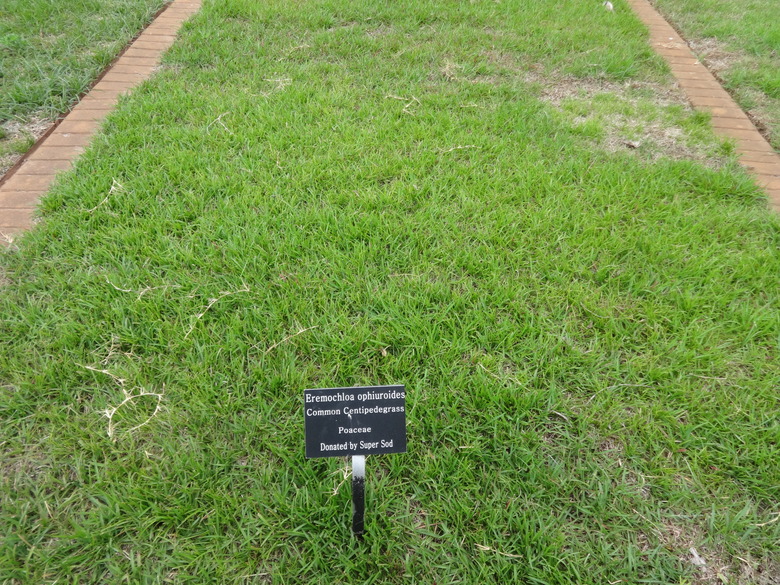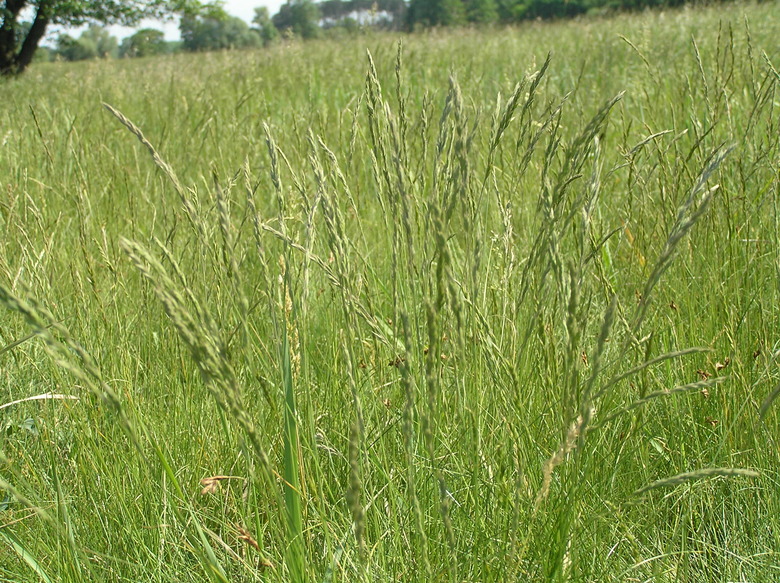How To Sow Centipedegrass Over Fescue
Overseeding a warm-season grass like centipedegrass over a cool-season grass like fescue is a good strategy to ensure a continuous green lawn during the warm and cool months.
Usually, the primary turf grass in a lawn is a warm-season grass that is then overseeded with a cool-season grass to extend a lawn's green look into the fall, winter and early spring. However, if your lawn is already fescue (Festuca spp., zones 3 to 9), you will be overseeding in the opposite manner, using a warm-season grass like centipedegrass.
Centipedegrass (Eremochloa ophiuroides, zones 7 to 10, previously categorized as Ischaemum ophiuroides) is a low-maintenance, heat-tolerant grass that requires minimal lawn care and is popular in warm climates, particularly the Southeast.
About Fescue Grass
Fescue is a popular cool-season grass planted in northern climates. Cool-season grasses grow best in the spring and fall when the weather is, well, cool. They also might retain their green color in the winter, depending on the climate and the variety.
Fescue grass is a deep green color and grows best with a pH of 5.5 to 6.5.
In general, fescue has better heat tolerance than some other cool-season grasses, like Kentucky bluegrass. It is also fairly drought tolerant, although that's not saying much because cool-season grasses do poorly in the heat.
Even so, overseeding fescue with a warm-season grass will likely produce a lawn that looks good all summer.
About Centipedegrass
As a warm-season grass, centipedegrass lawns are planted primarily in southern states and some central states. This grass is more of an apple-green color compared to fescue's deeper green.
This grass spreads by stolons and is somewhat slow-growing but results in a dense lawn over time. This low-maintenance lawn requires little lawn fertilizer and infrequent mowing compared to other lawn grasses. Furthermore, it's fairly insect and pest resistant.
This grass will grow in full sun, although it is fairly shade tolerant. It prefers acidic soil, ideally with a pH of 4.5 to 6.0.
Overseeding Fescue With Centipedegrass
When overseeding an existing lawn with a warm-season grass like centipedegrass, plan to do it in the late spring or early summer, because seed germination won't occur in cold soil.
Preparing to Overseed
Before overseeding, do some lawn maintenance to create a hospitable environment for your new seeds to grow, including removing thatch and aerating the lawn. Use a rake to soften the soil wherever there are bare spots.
Perform a pH test as well so you can add any necessary soil amendments before seeding.
Finally, mow the lawn short—shorter than you would normally— because you want the seeds to gain easy entrance to the soil. Some bare soil is necessary for the seeds to make good contact.
Sowing the Seed
Use a spreader and sow the seed heavily. In fact, double the amount of seed recommended on the lawn grass seed bag based on the area you are covering.
For example, if the grass seed mix manufacturer recommends 1 pound of seed for 500 square feet, use 2 pounds. Another option is to use the amount of seed recommended for new lawns rather than the amount recommended for overseeding.
After spreading the seed, rake it in carefully, and then water it well. Use a fine mist of water to avoid dislodging the seeds.
Tip
Double the amount of seed recommended on the lawn grass seed bag based on the area you are covering.
Tips on Overseeding Centipedegrass
Be aware that some differences between centipedegrass and fescue might make combining these two grass seed types into one lawn problematic:
- **Color:** These two grasses are markedly different shades of green. Depending on your climate and other environmental factors, if both are actively growing at the same time, your lawn will sport both dark green and apple-green leaf blades.
- **pH:** These two types of grass also have different pH requirements; centipedegrass likes the soil somewhat acidic, while fescue does better with a balanced pH. If you combine these two grass types, shoot for a pH as close to 6.0 as you can get since that is the sweet spot that will support the growth of both these grasses.
- **Mowing height:** Centipedegrass can tolerate a lower mowing height than some grasses, at 1.5 to 2.0 inches, but fescue does better at a longer height of 2.5 to 3.5 inches. For this reason, take care to avoid cutting your lawn too short.

